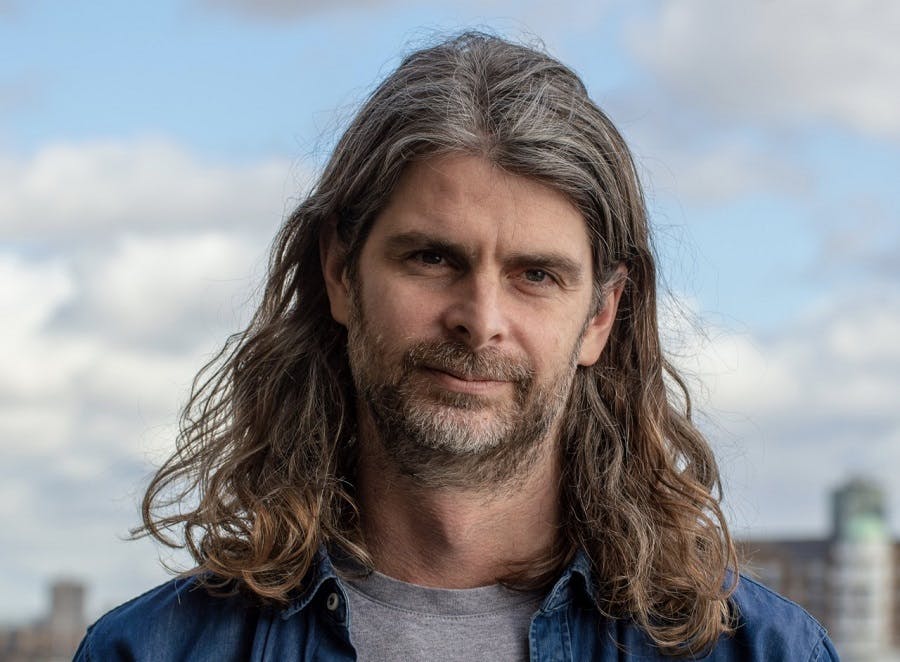Today’s ‘Day in the Life’ features Michael Scantlebury, the Creative Director and Founder of creative agency, Impero.
I chat with Michael about advertising for alcohol brands – (a particular area of expertise for Impero) – as well as the value of augmented reality, and why understanding cultural trends is the key to brand longevity.

Talk us through a typical day…
I started the company from scratch and used to be the strategist, suit, designer, accountant, cleaner and creative all at once. This mindset took a while to wear off but now I concentrate on what I like to do, and what I am good at, which is (I think anyway!) delivering the campaigns for clients.
I’m grateful to work with an excellent MD and Finance Director, which allows me to keep my focus on that side of things. No two days are the same and I can find myself thinking about a Beauty brief in the morning, a Transport execution in the afternoon, and a booze brand in the evening, when it feels most applicable!
How do you maintain an effective work/life balance?
I don’t think I do, particularly. I find myself at least thinking about, if not doing, work at all hours – Sunday is never exclusively a day of rest! But I like to work and what we do is so intrinsically linked to humanity, commerce and culture that daily life, be it popping to the off-licence, or reading about a new Yeezy range, can get you thinking about creative or planning strategy. I am sure I bore the hell out of my non-advertising friends with it often.
The demand for direct-to-consumer alcohol increased during Covid – how has this impacted strategy for your clients (many of which are alcohol brands)?
As commerce becomes more direct-to-consumer, consumers hand decision making over to the algorithm Gods, so paradoxically good old fashioned brand fame is more important in the brave new world of ecommerce.
A consumer walking down the aisle at Tesco will be visually prompted to reach for your product, because it’s sitting on the shelf, whereas online you need consumers to be actively seeking out and searching for your brand. An always-on, fame-first strategy is your best weapon here because if you are not salient in the mind of consumers, you are not searched for, and if you’re not searched for the algorithms won’t recommend you in the future. So over time, consumer by consumer, you will become invisible and forgotten.
At the same time, studies show that young people are drinking less – how is this affecting branding/marketing campaigns?
The reality is that the global wellness trend is affecting the alcohol industry and consumers want to feel better (emotionally and physically) about their choices. This is of course affecting the booze industry, but not always negatively. There are plenty of opportunities if you’re willing to innovate and move quickly. Sadly, some alcohol brands and businesses aren’t famous for either of those characteristics and are suffering because of it. Case in point, take the popularity of hard seltzers – effectively the lowest calorie way to get a buzz on – and it’s exploding! Mostly at the expense of beer. The No/Low category is also booming, taking attention away from gin and wine.
But it’s not always straight forward, you have to put things in perspective. Yes, young people are drinking less, but when it comes to the UK that’s from a high base. And you can never generalise entire demographics easily. If every consumer was all about low calorie, low alcohol drinks then rum wouldn’t be doing so well. And right now, with young people it is.
So, this shift is affecting those brands not moving with the times. Those still marketing the hipster, heavy, short cocktails or straight pours. The brands offering long, light, low alcohol, low calorie refreshing drinks – they’re winning.
Can you name a client who has excelled when it comes to innovation in strategy recently?
Our recent Dr.Jart+ campaign ticked all the boxes. We were briefed to launch the cult brand in the middle of a lockdown, without access to the usual in-store, event and sampling tricks kept up the beauty industry’s sleeve. This was creativity with handcuffs, but we looked at all the hurdles and detoured with an innovative AR based influencer campaign, creating a portal into another world for consumers to escape into and discover the brand. This caught fire online and built brand fame for their brand and product on TikTok and Instagram. It rose to number 1 earned media value, which converted directly to selling out some of their core products on Boots and smashing all their KPIs. That’s how it’s done.
What trends are you focusing on in 2021?
I think brands that are not connected to culture will have a limited life span. The consumer journey isn’t linear (truth is, it never was, but it was simpler). And you can’t just advertise your way to fame anymore. You need to be part of the conversation. And you need to prioritise consumer and cultural attention over everything else. So, I don’t look at specific tech trends, or platform trends – I look to cultural ones, and try and unpick those to understand what’s going to happen next so brands can be part of it, rather than chasing it.
What advice would you give a marketer right now?
Nothing is more important than attention. Go get some.







